Jamaica isn’t all beaches, reggae, and jerk chicken. Like any other nation on earth, Jamaica has a long, complex, and fascinating history. The best way to appreciate how Jamaica’s past influences its present identity is to visit some of the more famous Jamaica historical sites. In this article, we’ll explore a few of the most popular Jamaica historical sites to add to your Caribbean travel itinerary.
1. For Literary Buffs: Greenwood Great House
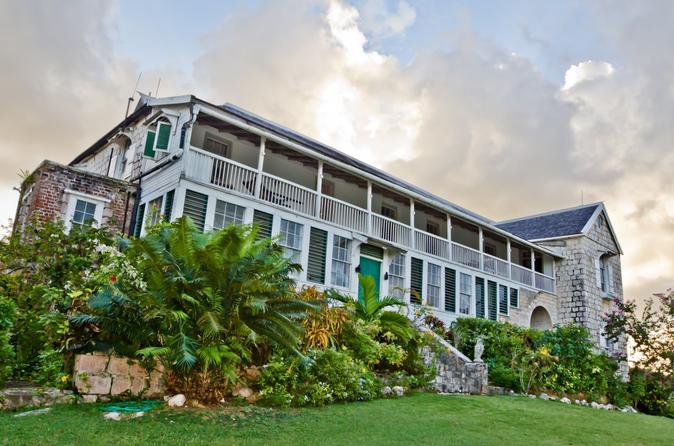
To understand the legacy of Greenwood Great House near Falmouth, we have to travel back to the 1650s. During that time, a Briton by the name of Hersey Barrett was ordered by Oliver Cromwell to defeat the Spanish in Hispaniola. When Barrett arrived in the Caribbean, however, he decided to attack Jamaica because there were less Spanish troops there. After winning Jamaica for the British Crown, the Barrett family became incredibly wealthy. In 1800 the family finished their 84,000 acre estate called the Greenwood Great House.
If you were paying attention in English class, you might’ve heard of Elizabeth Barrett-Browning before. Barrett-Browning was one of the most popular Victorian era poets and a direct descendant of Hersey Barrett! Visitors to the Greenwood Great House will learn more about the Barrett family and Plantation Era. Greenwood Great House is located at 435 Belgrade Avenue, St. James.
2. The Well-Preserved Falmouth Historic District
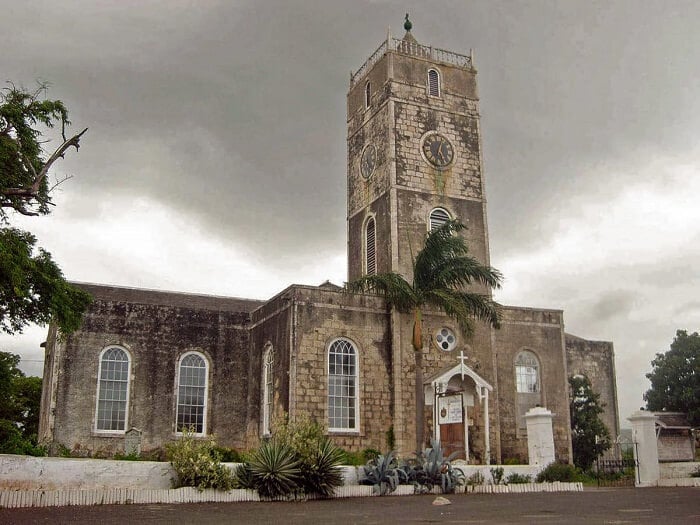
The port city Falmouth arguably has the most Jamaica historical sites of any city on the island. Even if you don’t go on any tours here, you’ll find some of the best-preserved Georgian-style buildings dating back to the 18th and 19th centuries in the city’s Historic District. The most famous 18th century plantation to visit in the area is called Good Hope Great House.
For those interested in Jamaica’s religious history, Falmouth has two historic houses of worship: St. Peter’s Anglican Church and the William Knibb Baptist Church. Yet another interesting place to visit is the pottery house where you can learn about Jamaica’s long history in the arts & crafts. Luckily for tourists, it’s easy to get to Falmouth due to its status as a port for Royal Caribbean International.
3. Act Like a Pirate in Port Royal

Are there any Pirates of the Caribbean fans out there? If so, then you’ve probably heard of a place called Port Royal, right? Yes, Port Royal was indeed a real place for dastardly pirates in Jamaica during the 17th century. Famously, on June 7th, 1692, a huge earthquake devastated the region and put an end to all the pirates’ no-good ways.
Although the port’s original buildings are ruined, visitors can still see many of the foundations of old structures like Fort Charles and Saint Peter’s Church. There’s also a museum here where visitors can separate the myths of Port Royal from the facts. Port Royal is a one-hour drive from the capital of Kingston.
4. Visit the Ghost of Rose Hall…If You Dare!

Sometimes called the “Jewel of Montego Bay,” the Rose Hall Great House is one of Jamaica’s most famous haunted houses. Constructed in around 1770, this Georgian mansion is said to be haunted by the ghost of a woman named Annie Palmer. She allegedly murdered three of her husbands here. Sometimes Palmer has been spotted around the premises and has been dubbed the “White Witch of Rose Hall.”
Brave tourists can go on spooky ghost tour around Rose Hall to see if they spot Palmer’s spirit hovering about. For people who are a little squeamish, Rose Hall also offers daytime tours and has a superb golf course.
5. Stand in Emancipation Square in Spanish Town
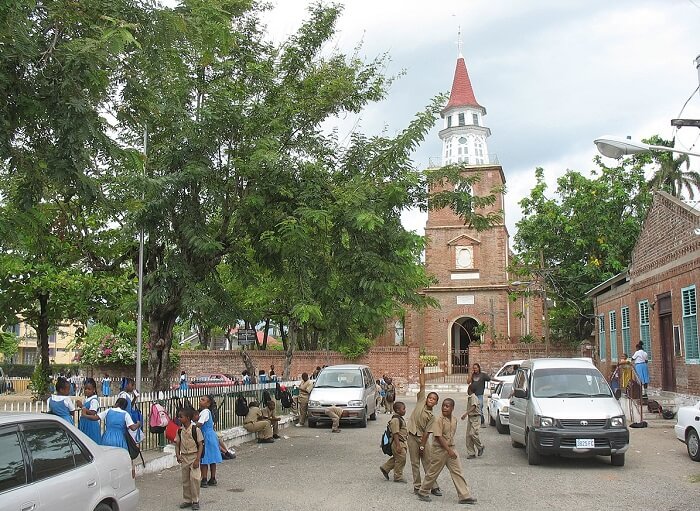
Located in Saint Catherine Parish, Spanish Town was called “New Seville” during the Spanish colonial period and served as the capital of Jamaica from 1534 until the British took over. While most of the red brick buildings that once graced this town are dilapidated, guests interested in Jamaican history will certainly enjoy strolling through this area’s historic square.
One of the most significant events to occur in Spanish Town was the first reading of the Emancipation Declaration in 1838 in the town center. Anyone visiting Spanish Town during Jamaican Independence Week in August will undoubtedly see parades and historic recitations in this town’s center. Spanish Town is only a 30-minute drive west of Kingston.
6. Learn the Fascinating Story Behind the Devon House
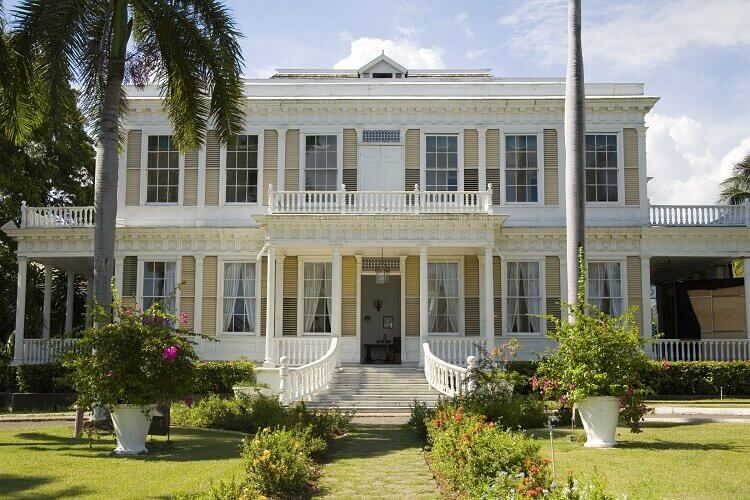
Located on 26 Hope Road in Kingston, the Devon House was the first mansion built in Jamaica by a half-black & half-Jewish millionaire: George Stiebel. Completed in 1881, the original property measured an impressive 51 acres; today, however, the mansion’s grounds are only 11 acres. Guests at Devon House will learn all about Stiebel’s remarkable rags-to-riches story as an investor in Venezuelan gold.
Visitors will also get to see remarkable antiques dating back to the early 19th century. Don’t forget to try out Devon House’s famous restaurant and ice cream before you leave! Without a doubt, Devon House is one of the more unique Jamaica historical sites.
7. Get Artistic at the National Gallery of Jamaica
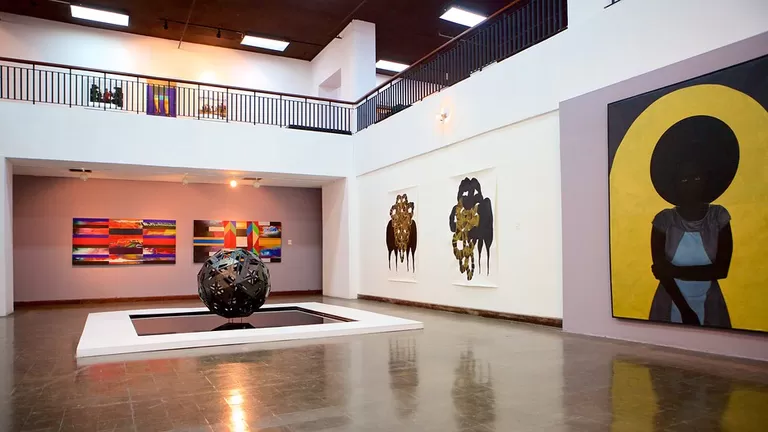
People interested learning about Jamaica from her artwork should plan a trip to the National Gallery of Jamaica in Kingston. Not only does this gallery have plenty of works by modern and colonial artists, it also houses one of the best collections of artifacts from indigenous Taino Indians. The National Gallery works hard to educate and encourage modern artistic talent in Jamaica. Even if you’re not an art buff, the National Gallery is an essential place to add to your Jamaica historical sites itinerary. You’ll find the National Gallery at 12 Ocean Boulevard.
8. Celebrate the King of Reggae at the Bob Marley Museum

We’ll close our list of Jamaica historical sites with one of the most popular tourist draws on the island: the Bob Marley Museum. Located at 56 Hope Road in Kingston, the Bob Marley Museum served as Bob Marley’s recording studio and residence shortly before his death.
In addition to artifacts from Marley’s life and times, visitors can see bullet holes on this museum’s doors from the attempted murder of Marley. There’s no better place to learn more about Jamaica’s most famous musician than at this Kingston museum.
Get Exploring! Jamaica Historical Sites Await
Believe it or not, indigenous people have lived in Jamaica since at least 4,000 BC. While the Spanish and British left a deep impact during the colonial period, Jamaica has been an independent nation since 1962 and retains its distinctive heritage to this day. Hopefully this list of Jamaica historical sites has inspired you to learn more about this fascinating nation.
